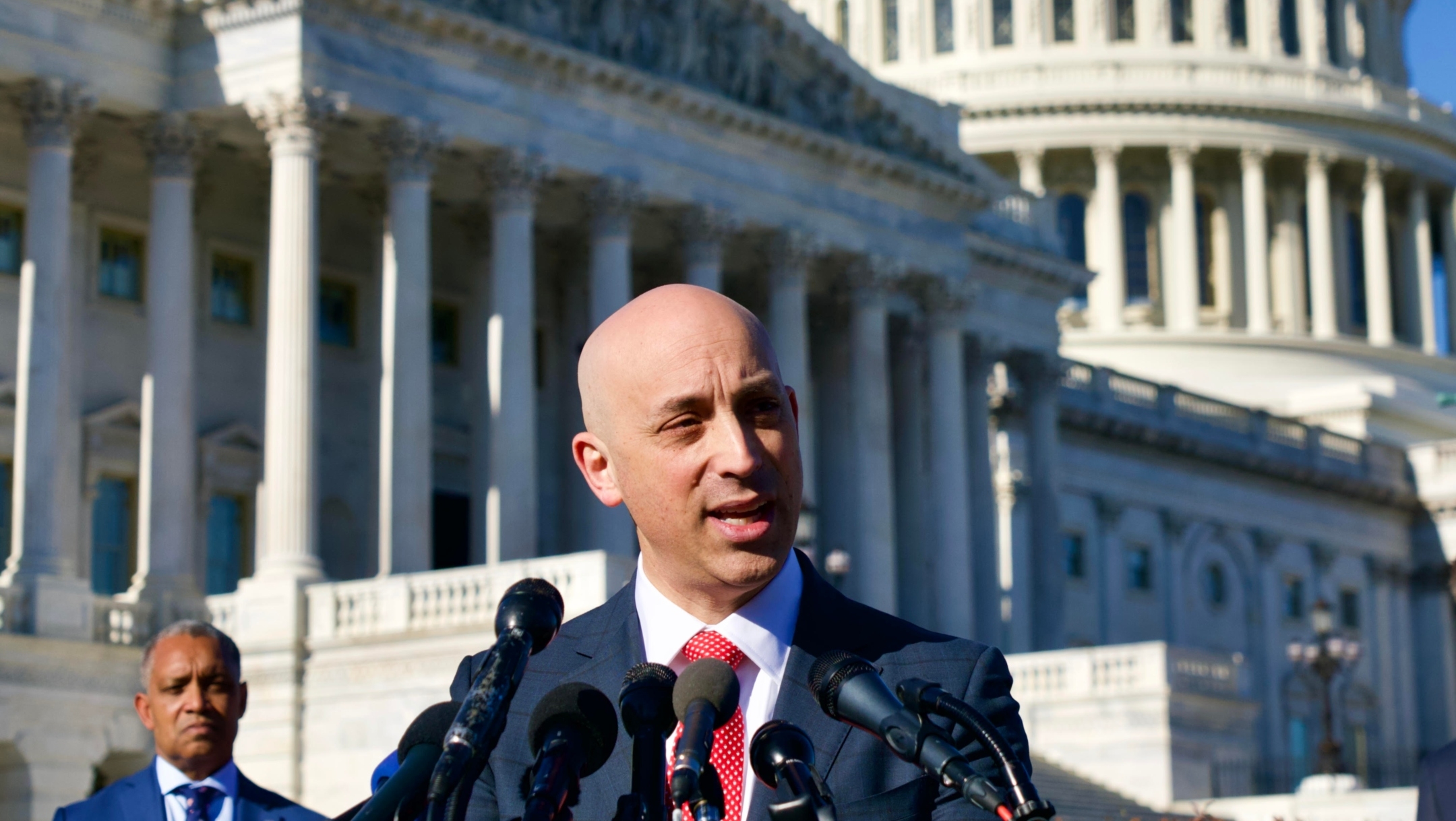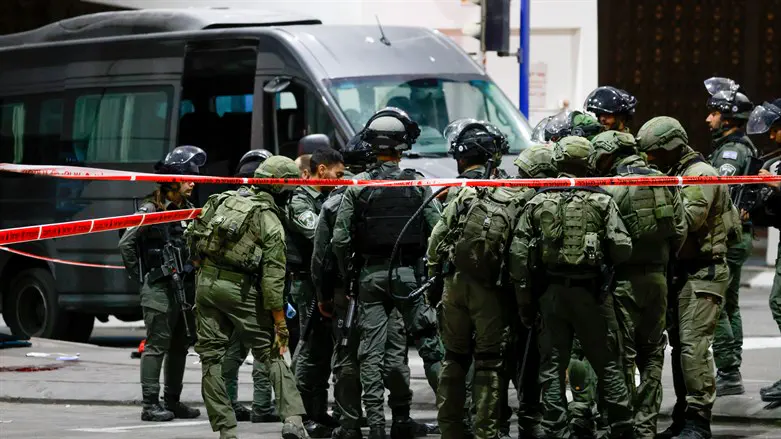People in New York City demonstrate for a ceasefire in Gaza on December 28. The Anti-Defamation League included more than 1,300 rallies in its tally of antisemitic incidents since Oct. 7, although many of those appear to be anti-Zionist events rather than the overt forms of antisemitism the organization has historically documented. Photo by Getty Images
The Anti-Defamation League released a report Wednesday listing more than 3,000 antisemitic incidents committed in the three months since Oct. 7, a stunning figure that tops full-year tallies every year except 2022.
Jonathan Greenblatt, the group’s chief executive, said in an embargoed news release that the count — which the group calculated as 360% higher than the same period in 2022 — represented a threat to Jews “unprecedented in modern history.”
But the ADL acknowledged in a statement to the Forward that it significantly broadened its definition of antisemitic incidents following the Oct. 7 Hamas attack to include rallies that feature “anti-Zionist chants and slogans,” events that appear to account for around 1,317 of the total count.
Overall, a large share of the incidents appear to be expressions of hostility toward Israel, rather than the traditional forms of antisemitism that the organization has focused on in previous years.
The group’s website suggests that many of the incidents in the new report were tracked on one of the organization’s social media accounts. That account compiles statements from political officials accusing Israel of ethnic cleansing, demonstrations organized by Students for Justice in Palestine and people tearing down posters of kidnapped Israelis alongside instances of swastika graffiti and bomb threats toward synagogues.
The ADL did not immediately make the underlying list of incidents available for review, though said it hopes to make it public soon. If Israel-related incidents are subtracted from the ADL’s report, the data still represents a meaningful, although less dramatic, rise in incidents.
There is little question that antisemitism has increased since Oct. 7, with numerous high-profile incidents reported on college campuses that have been reported by news outlets around the world, sparked a spate of lawsuits, and become the focus of a Congressional hearing that led to the resignation of the presidents of Harvard and UPenn. The New York Police Department also reported a spike of more than 200% in hate crimes against Jews in the first few weeks of the Israel-Hamas war. Groups that track harassment and crimes against Arabs and Muslims in the U.S. say it is also on the rise.
Shift in priorities
The intersections and distinctions between antisemitism and anti-Zionism — the opposition to Israel’s existence as the nation-state of the Jewish people — have long been the subject of fierce debate. Many experts see it as something of a Venn diagram — and many would say the overlaps have increased since the Hamas terrorist attack on Israel that killed 1,200 people, and the brutal war in Gaza that followed, killing more than 22,000 Palestinians.
The ADL has fiercely defended Israel for decades but has historically focused its counts of antisemitic incidents on more narrow expressions of antisemitism.
The inclusion of more anti-Zionist incidents in the count aligns with Greenblatt’s positioning in recent years, and especially since the start of the war and the pro-Palestinian protests it spawned in major cities and many college campuses. A former Obama Administration official, Greenblatt has continued the ADL’s longstanding work combating white nationalism, while also increasingly targeting left-wing activists, a shift that has sparked some criticism internally and externally.

Jonathan Greenblatt, chief executive of the Anti-Defamation League, has focused the organization on anti-Zionist activism and other criticism of Israel in recent years.Greenblatt first declared in a 2022 speech that he believes anti-Zionism is as antisemitic and dangerous toward Jews as white supremacism. He has ramped up that rhetoric since Oct. 7, stating inin November that recent activism had “clarified and confirmed that fanatical anti-Zionism from the hard left is as dangerous to the Jewish community as rabid white supremacy from the extreme right.
“These are both radical movements,” he said at an ADL gala in Los Angeles. “They don’t advocate for a two-state solution, or even a one-state solution. They want a final solution.”
Current and former employees of the ADL, speaking on the condition of anonymity, have criticized aspects of this approach in a series of recent articles. Jewish Currents reported last week that Yael Eisenstat, the head of the organization’s Center for Technology and Society, quit over Greenblatt’s relationship with Elon Musk, and that three of her employees had left over ADL’s stance against pro-Palestinian and anti-Zionist protesters. Separately, an ADL researcher, Stephen Rea, resigned in October over Greenblatt’s criticism of a rally organized by two progressive Jewish groups calling for a ceasefire in Gaza.
“Who in their right mind,” Greenblatt had written on X in response to the event, “can watch Hamas terrorists commit atrocities, brutally murder civilians, kidnap children, & elderly, & then protest Israel’s right to defend itself???”
Previous caution over Israel
Aryeh Tuchman, director of ADL’s Center on Extremism, which oversees the periodic tallies, said in an interview two years ago that his team generally only included incidents that had a clear victim — as opposed to general expressions of hostility toward Jews — and that there was a high bar for including criticism of Israel.
“We try really hard to make sure incidents involving Israel either include antisemitic tropes or schemes or specifically target Jewish institutions,” Tuchman said.
The new report said that about two-thirds of the incidents since Oct. 7 were related to the war in Gaza, and that these included some clear expressions of antisemitism, like a high school basketball player that allegedly told her Jewish opponent, “I support Hamas, you f–king Jew.”
The remaining incidents unrelated to Israel would number around 1,000, which itself is more than the total reported in full years as recently as 2015. Last year, the group tallied 3,697 incidents, the highest count on record.
ADL reports have shown a steady rise in antisemitism in recent years, and attributed the bulk of that increase to white supremacists’ actions. Wednesday’s report tallying so many leftist rallies represents a stark shift from that pattern.
Antisemitism since Oct. 7
Turmoil in Israel, Gaza and the occupied West Bank often leads to a global increase in antisemitism, and that phenomenon appears to have taken place in the U.S. since Oct. 7.
Synagogues and other Jewish institutions have received a large number of bomb threats, a trend that began over the summer but has escalated in recent months. Jewish-owned have also been targeted with hateful graffiti and vandalism, including a Los Angeles deli that was defaced with messages that included: “Israel’s only religion is capitalism.”
College campuses have also seen clearly antisemitic incidents like the violent threats a Cornell student posted toward his Jewish peers. But other incidents, like antiwar rallies including chants accusing Israel of genocide or calling for a free Palestine “from the river to the sea” are murkier, with many Jewish groups, like the ADL, seeing such chants and related graffiti as antisemitic and others defending them as free speech.
Campus incidents accounted for more than 500 of the 3,000 in ADL’s new report.











